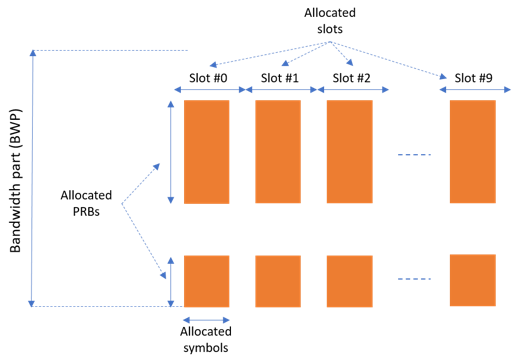Wireless Communication System Modeling
RF system design in wireless communications involves integrating various RF components like antennas, filters, amplifiers, modulators, and demodulators. When designing an RF system, it is crucial to consider the tradeoffs in these components to mitigate noise and intermodulation distortion effects.
For LTE and 5G applications, it is important to characterize the
impact of LTE interference on the RF reception of a new radio (NR)
waveform. To characterize the impact of LTE interference, use
RF Blockset™ to design an RF receiver and downconvert baseband LTE and
NR waveforms. By downconverting the waveforms, you can calculate metrics
such as error vector magnitude (EVM), adjacent channel leakage ratio
(ACLR), occupied bandwidth, channel power, and complementary cumulative
distribution functions (CCDF) using LTE Toolbox™
and 5G Toolbox™. To implement a measurement
testbench for your RF receiver in LTE reception, you can use the rfsystem object as a device under test (DUT).
In WLAN applications, it is necessary to characterize the impact of RF impairments, including in-phase and quadrature (IQ) imbalance, phase noise, and power amplifier (PA) nonlinearities, on the transmission of an 802.11ax waveform. You can use WLAN Toolbox™ to generate and oversample a baseband 802.11ax waveform for this purpose. You can then import this waveform as an RF signal into the RF transmitter block for upconversion. Using the upconverted waveform, you can calculate metrics such as spectral mask, occupied bandwidth, channel power, CCDF, and peak-to-average power ratio (PAPR).
By leveraging these tools and methodologies, you can effectively characterize the impact of LTE interference in RF reception and RF impairments in transmission, enabling comprehensive analysis and optimization of RF system designs for wireless communications.
Topics
LTE RF Transmitter and Receiver Design
- Modeling and Testing an LTE RF Transmitter (LTE Toolbox)
This example shows how to characterize the impact of radio frequency (RF) impairments, such as in-phase and quadrature (IQ) imbalance, phase noise, and power amplifier (PA) nonlinearities, on the performance of an LTE transmitter. - Modeling and Testing an LTE RF Receiver (LTE Toolbox)
This example demonstrates how to model and test an LTE RF receiver using LTE Toolbox™ and RF Blockset™.
802.11ax RF Transmitter Design
- Modeling and Testing an 802.11ax RF Transmitter (WLAN Toolbox)
This example shows how to characterize the impact of RF impairments in an 802.11ax transmitter. - Modeling and Testing an 802.11ax RF Receiver with 5G Interference (WLAN Toolbox)
Characterize the impact of RF impairments on the RF reception of an IEEE® 802.11ax™ waveform coexisting with an adjacent 5G or 802.11ax interferer.
NR RF Receiver and Transmitter Design
- Modeling and Testing an NR RF Receiver with LTE Interference (5G Toolbox)
Characterize the impact of RF impairments of NR-TM waveforms when coexisting with LTE waveforms. - Modeling and Testing an NR RF Transmitter (5G Toolbox)
Characterize the impact of RF impairments, such as IQ imbalance, phase noise, and PA nonlinearities in an NR RF transmitter. - Power Amplifier and DPD Modeling for Dynamic EVM Measurement
Extract a PA model using measured data, verify the quality of the fitting, and simulate the PA model with and without DPD.


